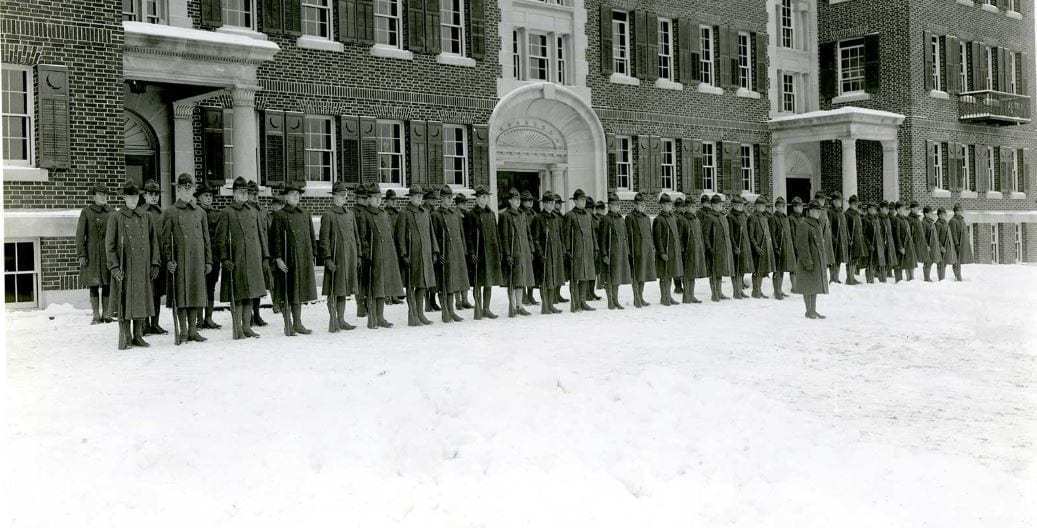The Geo-temporal Representation
What we not see is as important as what we have seen in the timeline of disasters. We want to acknowledge that we haven’t included many disasters that are felt most intensely by some members of the college community in the past or the present. For some, this might feel like they are being alienated or othered by the Amherst archive– we deeply apologize if it happens to be the case. The brevity of this summer’s research program has limited the scope to which we could consult the sources and compile a detailed, fact-supported, yet relatively comprehensive timeline.
To the end of representing the timeline in a fuller picture, we create this section highlighting geo-temporal dimensions of the various types of disasters. Some disasters– included in the timeline or not– take place outside of the Amherst campus. Some disasters initiated in the wider geographical scale– national or worldwide– did impose vital consequences on how the Amherst community dealt with the disasters on the local scale. Some disasters happen as a response to another disaster, yet some also reflect the bigger time wherein they were situated. We find the presidents’ terms a good division of recordation. Discovering disasters alongside landmark college decisions elevates our perspectives about disasters’ rippling impact on the college level.
Disasters outside of the Amherst Campus: Broadening the “Amherst Community”
Who says disasters at Amherst must take place on Amherst campus? The college community comprises affiliations and families from a wide range of socioeconomic backgrounds and experiences. Amherst students and faculty, for example, come from all but a few states in the U.S. since the 19th century. With the boost in international student enrollment since the 1980s, the geographical boundary of which the “college community” defines has greatly expanded. The disasters mapped above reveal that the Amherst community has responded to remote disasters through collective efforts, even though some of them only intensively impacted a part of the community.
- Great Chicago Fire & Great Boston Fire: both times, Amherst enhanced firefighting training among students, gave special aid to students and families impacted by the fire.
- Hurricane Katrina & Hurricane Maria: Amherst invited students impacted by the hurricanes to study on campus and initiated fundraising campaigns for the most devastated areas.
- World War I & World War II: Amherst has never become a battlefield, but students and alumni went to battlefields, and the campus turned into a site for military training programs.
- Civil War: Amherst students died on the battlefield.
- 9/11 Attack: Three alumni died from the incidents, and multiple families shook in horror.
- Belchertown Fire: Students at Amherst gallantly helped put out a fire in the woods of Belchertown.
- The assassination of Martin Luther King: Waves of demonstrations spurred. Faculty and students joined the campaign to promote civil rights, end the Vietnam War, and rebel against corrupted institutions. “Blacks Seize Buildings” movement gradually took its shape to demand a more active response from the administration.
Local, National, and Global Disasters: Parallels and Ripples of the U.S. National Disasters
| Disasters in the 20th Century U.S. | Corresponding Local Disasters in Amherst |
|---|---|
| World War I | Amherst was transformed into “a war college”. Students grouped in regiments as Student Army Training Corps. Some went to the battlefield. Others took “War Issues” courses. |
| 1918 Influenza | Over a third of Amherst alumni died in World War I because of the flu. |
| Great Depression | The college increased the demand for student aid. Wildlife Sanctuary created to provide jobs for students and town residents. |
| World War II | Many students and alumni headed off to war. The College became the temporary site for numerous military training programs. |
| Civil Rights Movement and Death of Martin Luther King | Multiple protests on- and off-campus in the 1960s demanding equal civil rights. Students were arrested off-campus for participating in the protests. “Blacks Seize Buildings” took shape. |
| Vietnam War | Amherst became the first town in the US to form a weekly vigil protesting the Vietnam War. |
| Energy Crisis in the 70s | College extended winter break and reduced heat in dorms. Compensation was given for staff to afford higher energy expenses. |
| 9/11 Attack | At least 3 alumni were killed in the attack. Numerous families affected. |
| Covid-19 Pandemic | College shifted the latter half of the Spring 2020 semester remote. Multiple students struggled to find a safe shelter to continue their studies. College provided accommodations to those who could not travel back home. Financial budget cuts influence multiple academic and student activities programs. |
Disasters by Amherst’s Presidency

Read More
Teichgraeber III, R., 2018. A War College | Online Extras | Amherst College. [online] Amherst.edu. Available at: <https://www.amherst.edu/amherst-story/magazine/issues/2018-fall/online-extras/a-war-college>.
Amherst.edu. 2020. Hurricane Of 1938 | Exhibitions And Blog | Amherst College. [online] Available at: <https://www.amherst.edu/mm/86668>
Amherst.edu. 2020. Digital Scholars 2016 | 08/2016 | Amherst College. [online] Available at: <https://www.amherst.edu/mm/532620> .
Project by Haoran Tong ’23, DSSF 2020

You must be logged in to post a comment.